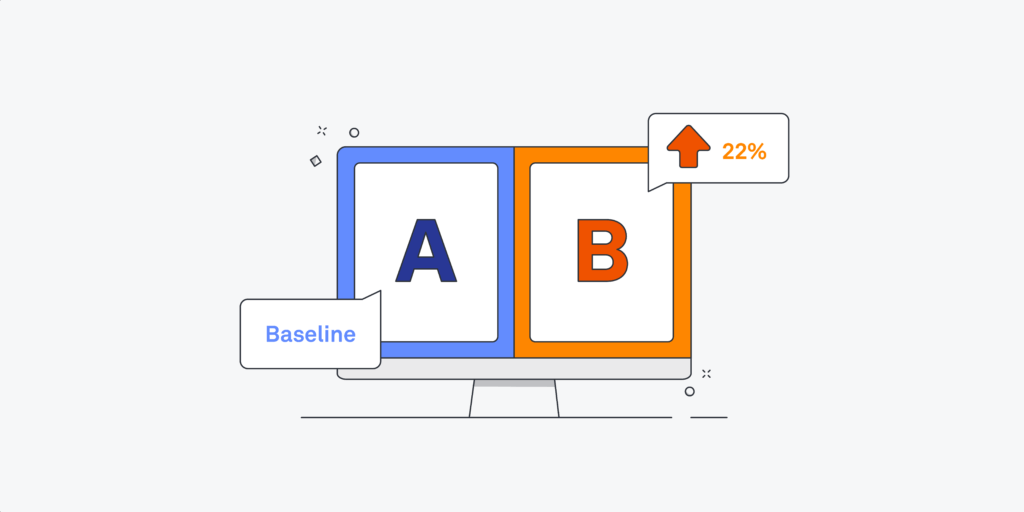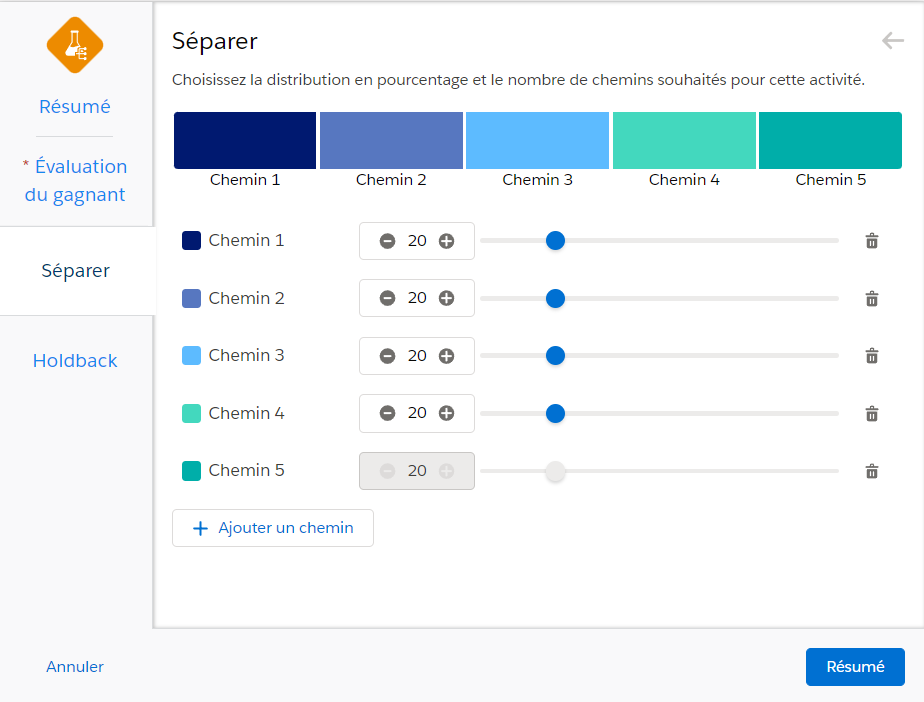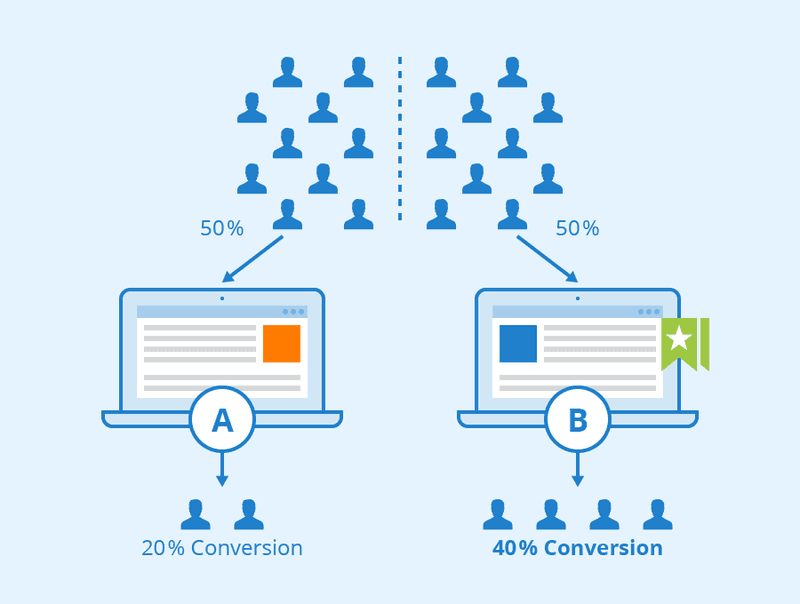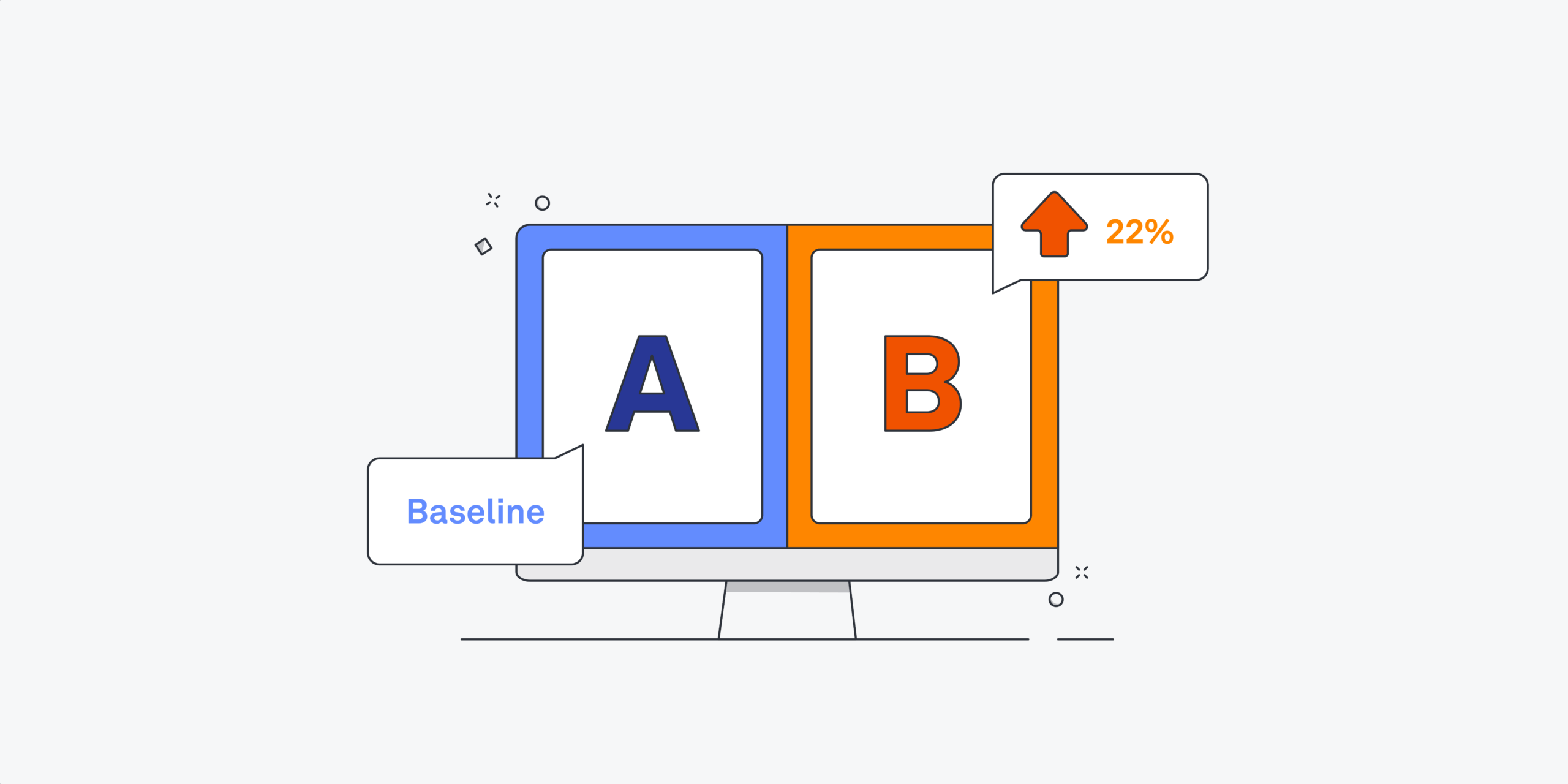
CRM Marketing A/B Testing: The Ultimate Guide to Boosting Conversions
In the ever-evolving landscape of digital marketing, staying ahead of the curve requires more than just intuition; it demands a data-driven approach. This is where the powerful combination of CRM marketing and A/B testing comes into play. This comprehensive guide will delve deep into the synergy between these two strategies, providing you with the knowledge and tools to supercharge your conversion rates and maximize your return on investment (ROI).
Understanding the Core Concepts: CRM and A/B Testing
What is CRM?
Customer Relationship Management (CRM) isn’t just software; it’s a philosophy. It’s about understanding your customers, their behaviors, and their needs. A CRM system acts as the central nervous system of your business, collecting, storing, and managing customer data. This data can include everything from basic contact information to purchase history, website interactions, and support tickets. With this wealth of information at your fingertips, you can personalize your marketing efforts, improve customer service, and build stronger, more profitable relationships.
Think of your CRM as a digital scrapbook of your customer interactions. Every email, every phone call, every website visit – all of it is meticulously documented. This allows you to gain a 360-degree view of each customer, enabling you to tailor your messaging and offers to their specific needs and preferences. CRM systems are the backbone of modern marketing strategies, providing the insights needed to make informed decisions and drive growth.
What is A/B Testing?
A/B testing, also known as split testing, is a method of comparing two versions of a webpage, email, or other marketing asset to determine which performs better. It’s a scientific approach to optimization, allowing you to make data-driven decisions about your marketing campaigns. Instead of guessing what your audience will respond to, you can test different variations and see which one generates the most conversions, clicks, or engagement.
Imagine you want to improve the click-through rate (CTR) of your email campaigns. You could create two versions of your email, A and B. Version A might have a bold headline, while Version B has a more subtle one. You then send each version to a segment of your audience and track which one gets more clicks. The version that performs better is the winner, and you can then implement it across your entire campaign. A/B testing allows you to refine your marketing efforts, constantly improving your results and maximizing your ROI.
Why CRM Marketing and A/B Testing are a Perfect Match
The true power of CRM marketing is unlocked when combined with the analytical rigor of A/B testing. CRM provides the data, while A/B testing provides the means to refine your strategy. This dynamic duo allows you to:
- Personalize at Scale: CRM data allows you to segment your audience and create highly targeted A/B tests based on demographics, behavior, and purchase history.
- Optimize Every Touchpoint: From email subject lines to website landing pages, you can test and optimize every aspect of the customer journey.
- Improve Conversion Rates: By identifying and addressing pain points, you can significantly increase your conversion rates.
- Maximize ROI: Data-driven decisions lead to more efficient marketing spending and a higher return on investment.
- Gain Deep Customer Insights: A/B testing provides valuable insights into customer preferences and behaviors, which can inform your overall marketing strategy.
In essence, CRM provides the ‘who’ and ‘why,’ while A/B testing provides the ‘how.’ Together, they create a powerful feedback loop that drives continuous improvement and delivers exceptional results.
Implementing A/B Testing in Your CRM Marketing Strategy
Successfully integrating A/B testing into your CRM marketing strategy requires a structured approach. Here’s a step-by-step guide:
1. Define Your Goals and KPIs
Before you start testing, you need to know what you’re trying to achieve. What are your primary marketing objectives? Are you aiming to increase website traffic, generate more leads, or boost sales? Once you’ve defined your goals, you need to identify the Key Performance Indicators (KPIs) that will measure your success. These might include:
- Click-Through Rate (CTR): The percentage of people who click on a link in your email or on your website.
- Conversion Rate: The percentage of people who complete a desired action, such as making a purchase or filling out a form.
- Open Rate: The percentage of people who open your email.
- Bounce Rate: The percentage of people who leave your website after viewing only one page.
- Customer Lifetime Value (CLTV): The predicted revenue a customer will generate throughout their relationship with your business.
Having clear goals and KPIs will help you focus your testing efforts and accurately measure the impact of your changes.
2. Segment Your Audience
CRM data is your secret weapon for audience segmentation. Use the information stored in your CRM to divide your audience into distinct groups based on demographics, behavior, purchase history, and other relevant factors. This allows you to create highly targeted A/B tests that resonate with specific customer segments. For example, you could segment your audience based on:
- Demographics: Age, gender, location, income, etc.
- Behavior: Website activity, email engagement, purchase history, etc.
- Purchase History: Product preferences, average order value, frequency of purchases, etc.
- Lifecycle Stage: Lead, prospect, customer, loyal customer, etc.
The more granular your segmentation, the more effective your A/B tests will be.
3. Identify Test Variables
What aspects of your marketing assets will you test? Focus on elements that have the potential to significantly impact your KPIs. Here are some examples:
- Email Subject Lines: Test different subject lines to improve open rates.
- Email Content: Test different layouts, calls to action (CTAs), and messaging.
- Landing Pages: Test headlines, body copy, images, and forms.
- Website CTAs: Test button colors, text, and placement.
- Website Headlines: Test different headlines to improve engagement.
Start with one variable at a time to isolate the impact of each change. This will make it easier to analyze the results and understand what’s working.
4. Create Your A/B Test Variations
Create two or more versions of the element you want to test. Make sure the variations are significantly different so you can clearly identify which one performs better. For example, if you’re testing email subject lines, create one version that’s short and punchy and another that’s longer and more descriptive. Use your CRM platform or a dedicated A/B testing tool to create and manage your tests.
5. Run Your Tests
Once your variations are ready, it’s time to launch your tests. Determine the sample size and duration of your tests based on your expected conversion rates and the statistical significance you require. Run the tests long enough to gather statistically significant data. This will ensure that your results are reliable and that the differences you observe are not due to random chance.
6. Analyze Your Results
After your tests have run for a sufficient period, analyze the data to determine which variation performed best. Look at your KPIs and compare the performance of each variation. Use A/B testing tools to help you analyze the results and identify statistically significant differences. Not all differences are meaningful. Statistical significance indicates that the difference in performance is unlikely to be due to chance.
7. Implement the Winning Variation and Iterate
Once you’ve identified the winning variation, implement it across your marketing campaigns. Continue to monitor your results and make further refinements as needed. A/B testing is an ongoing process. Never stop testing and optimizing. Based on the results of your tests, you can continue to refine your marketing efforts and improve your results. Once you’ve implemented the winning variation, don’t rest on your laurels. Continue to test different elements and iterate on your strategy to maximize your ROI.
Best Practices for CRM Marketing A/B Testing
To maximize the effectiveness of your CRM marketing A/B testing efforts, keep these best practices in mind:
- Start Small: Don’t try to test everything at once. Begin with a few key areas and gradually expand your testing efforts.
- Focus on High-Impact Areas: Prioritize testing elements that have the greatest potential to impact your KPIs, such as email subject lines, CTAs, and landing page headlines.
- Test One Variable at a Time: This makes it easier to identify the impact of each change.
- Use a Large Enough Sample Size: Ensure your tests have enough data to provide statistically significant results.
- Run Tests for a Sufficient Duration: Allow enough time for your tests to run to collect a representative sample.
- Segment Your Audience: Use CRM data to create highly targeted A/B tests.
- Document Your Results: Keep track of your tests, results, and learnings to inform future campaigns.
- Stay Organized: Maintain a clear and organized testing process.
- Be Patient: A/B testing takes time and effort, so don’t get discouraged if you don’t see results immediately.
- Embrace Failure: Not every test will be a success. Learn from your failures and use them to improve your strategy.
Tools for CRM Marketing A/B Testing
Several tools can help you implement and manage your CRM marketing A/B testing efforts. Here are some of the most popular options:
- CRM Platforms: Many CRM platforms, such as Salesforce, HubSpot, and Zoho CRM, offer built-in A/B testing features or integrations with A/B testing tools.
- A/B Testing Tools: Dedicated A/B testing tools, such as Optimizely, VWO (Visual Website Optimizer), and Google Optimize, provide advanced features for creating, running, and analyzing A/B tests.
- Email Marketing Platforms: Email marketing platforms like Mailchimp, Constant Contact, and Sendinblue offer A/B testing capabilities for email subject lines, content, and send times.
- Landing Page Builders: Landing page builders like Unbounce and Instapage include A/B testing features to optimize your landing pages.
The best tool for you will depend on your specific needs and budget. Consider the features, integrations, and ease of use when choosing a tool.
Examples of CRM Marketing A/B Tests
Let’s look at some real-world examples of how businesses are using A/B testing in their CRM marketing strategies:
Email Marketing
- Subject Line Testing: Testing different subject lines to improve open rates. For example, testing a subject line with a question versus a statement.
- Email Content Testing: Testing different layouts, calls to action (CTAs), and messaging within the email.
- Personalization Testing: Testing the impact of personalized content and offers based on customer data.
- Segmentation Testing: Testing different email content to different customer segments based on their behavior.
Website Optimization
- Headline Testing: Testing different headlines on landing pages to improve conversion rates.
- CTA Testing: Testing different button colors, text, and placement to increase click-through rates.
- Form Optimization: Testing different form fields and layouts to reduce form abandonment.
- Image Testing: Testing different images and videos to improve engagement and conversions.
Lead Nurturing
- Email Sequence Testing: Testing different email sequences to nurture leads and move them through the sales funnel.
- Content Testing: Testing different types of content, such as ebooks, webinars, and case studies, to see which ones generate the most engagement.
- Timing Testing: Testing different send times and frequencies to optimize lead engagement.
These are just a few examples of how businesses are using A/B testing in their CRM marketing strategies. The possibilities are endless, and the only limit is your imagination.
The Benefits of a Data-Driven Approach
In the dynamic world of CRM marketing, a data-driven approach is no longer optional; it’s essential. By leveraging the power of A/B testing, you can make informed decisions, optimize your campaigns, and achieve superior results. Here are some key benefits of embracing a data-driven approach:
- Improved ROI: Data-driven decisions lead to more efficient marketing spending and a higher return on investment.
- Increased Conversion Rates: By identifying and addressing pain points, you can significantly increase your conversion rates.
- Enhanced Customer Experience: Personalizing your marketing efforts based on customer data improves the overall customer experience.
- Better Decision-Making: Data provides the insights needed to make informed decisions and drive growth.
- Competitive Advantage: Businesses that embrace a data-driven approach are better positioned to stay ahead of the competition.
By combining the insights of CRM with the analytical rigor of A/B testing, you can create a powerful feedback loop that drives continuous improvement and delivers exceptional results. Embrace the power of data and transform your CRM marketing strategy.
Overcoming Challenges and Pitfalls
While the combination of CRM marketing and A/B testing offers significant benefits, it’s important to be aware of potential challenges and pitfalls. Here are some common issues and how to overcome them:
- Lack of Data: If you don’t have enough data in your CRM system, you may struggle to segment your audience and create meaningful A/B tests. To overcome this, focus on collecting more data from your customers. Implement lead capture forms, track website activity, and integrate your CRM with other systems.
- Poor Data Quality: Inaccurate or incomplete data can lead to flawed insights and ineffective A/B tests. Regularly review and clean your CRM data to ensure its accuracy and completeness. Implement data validation rules and train your team on data entry best practices.
- Insufficient Sample Sizes: If your sample sizes are too small, your results may not be statistically significant. Always run your tests long enough to gather enough data to draw valid conclusions. Use A/B testing tools to calculate the required sample size.
- Testing Too Many Variables at Once: Testing too many variables simultaneously can make it difficult to isolate the impact of each change. Focus on testing one variable at a time to make your results more reliable.
- Ignoring Statistical Significance: Don’t make decisions based on small differences in performance. Always check for statistical significance before implementing a change. Use A/B testing tools to analyze your results and determine if the differences are statistically significant.
- Not Documenting Your Results: Failing to document your tests, results, and learnings can hinder your progress. Keep detailed records of your tests and analyze the results to inform future campaigns.
By being aware of these potential challenges, you can proactively address them and ensure the success of your CRM marketing A/B testing efforts.
The Future of CRM Marketing and A/B Testing
The synergy between CRM marketing and A/B testing is only going to become more crucial in the future. As technology advances and customer expectations evolve, businesses will need to adapt and refine their strategies. Here’s what the future holds:
- Increased Personalization: CRM systems will become even more sophisticated, allowing for hyper-personalization based on individual customer behaviors and preferences.
- AI-Powered Testing: Artificial intelligence (AI) will play a greater role in A/B testing, automating the process of identifying test variables, running tests, and analyzing results.
- Omnichannel Optimization: Businesses will need to optimize their marketing efforts across all channels, including email, social media, website, and mobile.
- Focus on Customer Experience: Customer experience will become the ultimate differentiator, and businesses will need to prioritize creating seamless and personalized experiences across all touchpoints.
- Real-Time Testing: A/B testing will become more real-time, allowing businesses to quickly adapt to changing customer behaviors and market trends.
To stay ahead of the curve, businesses will need to embrace these trends and invest in the tools and technologies that enable them to deliver exceptional customer experiences. The combination of CRM marketing and A/B testing will be essential for achieving these goals.
Conclusion: Mastering the Art of CRM Marketing A/B Testing
CRM marketing and A/B testing are two of the most powerful tools in a marketer’s arsenal. By combining these strategies, you can create a data-driven marketing engine that drives conversions, builds stronger customer relationships, and maximizes your ROI. Remember to define your goals, segment your audience, identify test variables, and analyze your results. Continuously test, iterate, and refine your strategy to stay ahead of the competition. Embrace the power of data, and watch your marketing efforts soar!


